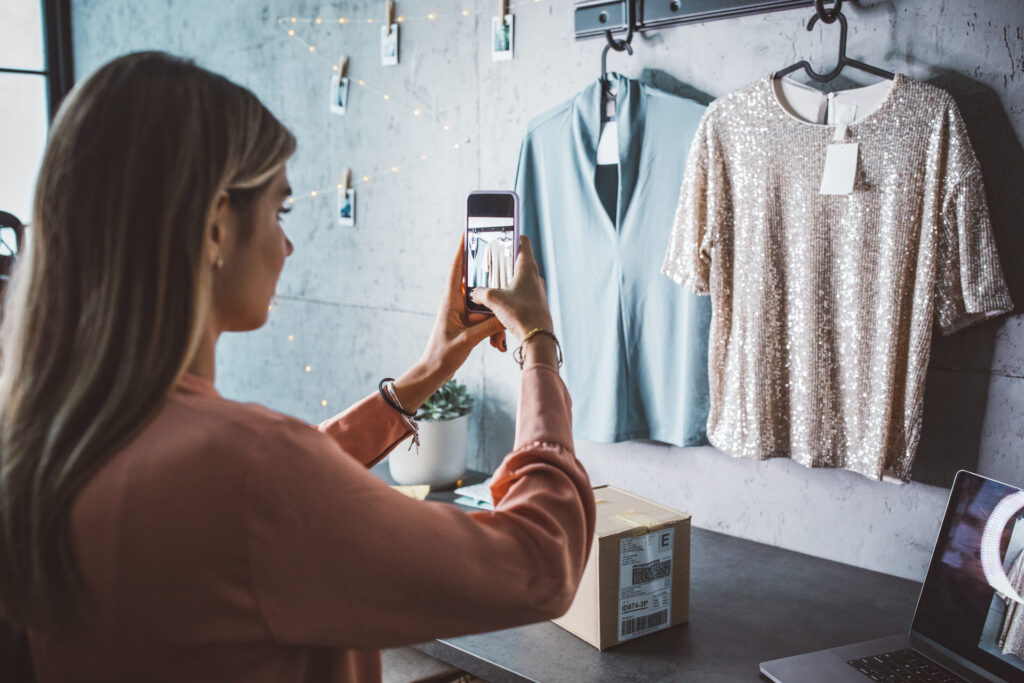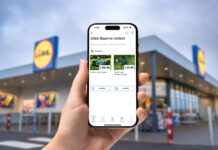For some years now, personalisation has been gaining pace in retail – but a certain group of trailblazers are supercharging the concept. Streaming platforms are obvious frontrunners in the race, with TV brands making tailored recommendations into something of an art form.
Disney +, for example, is a perfect model for the collisional power of big data and tech. The streaming platform, which launched in late 2019, feeds behavioural data into AI algorithms to serve personalised viewing suggestions to its 118 million global paid subscribers. Recommendations are based on a minutiae of factors, right down to which movies customers watch on repeat, what they choose not to watch and even predicted mood, or what a specific person does when the credits start rolling.

Online personal styling service Stitch Fix harnesses similar machine learning processes to curate personalised wardrobe “fixes” for its over four million global clients. The business, with a market cap of $3.8billion, uses detailed insights from a customer’s past purchases and preferences to match individual items or an entire new outfit – effectively preempting what colour, shapes, styles and labels a particular person will like. Clients can also order a “quick fix” ahead of special occasions and events.
Together, companies like Disney+ and Stitch Fix are driving massive growth on the back of predicting what customers want and need in the moment – a trend also known as hyper-personalisation: Hyper-personalisation draws on a series of granular-level data points – such as location, search history, user preference, order history and more – to deliver content and product predictions that are specifically scoped to a person’s tastes at any one point in time.
It commands attention by recognising what any given person wants in terms of personalised recommendations and delivering that with bespoke content (e.g. imagery or messaging) that is also customised just for them.
A new calibre of brand loyalty
It’s no secret that consumers have come to expect tailored experiences in retail: in fact, 80% want personalised shopping options, according to a study from Epsilon and GBH Insights. But while relevant communications in retail can drive revenue growth of 10 to 30 per cent for a brand (McKinsey), they don’t always hit the mark.
Nearly a third of shoppers believe retailers need to do more in terms of creating personalised experiences. Brands, therefore, have an opportunity to inspire customers with content, campaigns and product ideas that are more closely aligned to what individuals want.
Hyper-personalisation is a great way to fulfil this demand, especially when brand loyalty is undergoing a dramatic transformation. Over 60% of global consumers have changed their shopping behaviour due to Covid-19, rising to 75% in the States. Even more strikingly, of consumers who have tried different brands, 73% intend to continue shopping with them.
As the world braces in the face of the Omicron and subsequent variants,we can expect shopping habits to continue to fluctuate based on factors such as value, availability and convenience. In this context, hyper-personalisation is a vital tool, helping brands work harder to reclaim consumer loyalty. With a relevant set of rewards and benefits woven into the retail model, customers have plenty of reasons to keep returning.
Recommendations for the right time and the relevant mood
While data capacity certainly helps when it comes to hyper-personalisation, this is a strategy that leaves scope for plenty of creativity, too.
Take German railway company Deutsche Bahn, which in 2019 launched an AI-powered “No Need To Fly” campaign comparing iconic global landmarks to similar-looking German destinations. Showing the difference in flight versus train prices in both locations, the brand targeted travel enthusiasts and local influencers on Facebook, sparking a massive 24% increase in revenue.
This clever execution is built on two vital ingredients of hyper-personalisation: sophisticated tech (in this case, AI) and the ability to weave customers into a real-time dialogue. The result is one-to-one personalisation that speaks to relevant customers in the proper context, from the foundation of a highly creative approach.
In a similar vein, skincare brand Skin + Me offers a “dermatologist to your doorstep” service based on data collated directly from its customers. Users fill out an online questionnaire, along with photos of their face, and in return receive a bespoke cream that is personalised to any flare-ups or problems they are suffering at that period in time. Again, it provides compatible options that customers may not have realised they even needed.

The data balance and leveraging tech
In an age where consumer privacy is becoming an increasingly visible and contested issue, hyper-personalisation raises important questions about the use of consumer data. But the examples in this piece show how brands can use first party data – which they own – to get the balance right.
The vast majority of consumers are understandably worried about sharing their data: but they’re also willing to do so in return for certain, clearly stated benefits. Hyper-personalisation works because the system is transparent: customers are ready to provide insights to reap specific, personalised rewards.
Starbucks’ bonus star challenge is a good example of this payback in action. The drinks brand uses data from its loyalty app to select three products for individual customers to buy each week. Two are drinks that that person buys often, and the third is one they haven’t yet tried but might well like, based on their past buying habits. Those customers who buy the recommended items within a week qualify for bonus points that result in a free drink.
Brands also need the right tech and omnichannel structures to enable hyper-personalisation. Online drinks retailer Naked Wines, for example, delivers highly personalised wine recommendations based on each customer’s reviews, past purchases and ratings. The brand recently elevated this experience at scale, creating an email campaign that provides unique wine recommendations based on profile variables such as a customer’s basket contents and the number of wines they’ve rated.
To achieve this feat is not just a matter of data science – including product data, customer data and purchase data, and the ability to create recommendations from all three touchpoints. It’s also about technical maturity. To deliver hyper-personalised messaging via their email or other platforms, companies like Naked Wines need automated content production capabilities at their disposal. Headless commerce architecture, for example, will be key to making every interaction personal, with content and products that can be delivered, updated or localised in moments, to any screen or device, enabled by APIs.
Hyper-personalisation, then, can enable a major competitive advantage in retail, hinging as it does on real-time, rather than historical, behaviour. This allows brands to scope recommendations and content to on-demand customer experience, commanding loyalty in uncertain times.


















